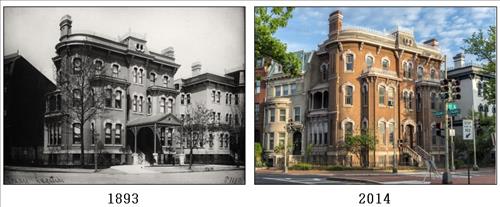- California Assembly OKs highest minimum wage in nation
- S. Korea unveils first graphic cigarette warnings
- US joins with South Korea, Japan in bid to deter North Korea
- LPGA golfer Chun In-gee finally back in action
- S. Korea won’t be top seed in final World Cup qualification round
- US men’s soccer misses 2nd straight Olympics
- US back on track in qualifying with 4-0 win over Guatemala
- High-intensity workout injuries spawn cottage industry
- CDC expands range of Zika mosquitoes into parts of Northeast
- Who knew? ‘The Walking Dead’ is helping families connect
102 years later, Korea takes back former empire legation for restoration

The former legation of the Korean Empire, sold by the Japanese colonial empire in 1910 for $5, was bought back by the South Korean government in 2012 and will undergo restoration beginning Monday.
One hundred and two years after having the Korean Empire’s legation in the U.S. taken away by the Japanese colonial empire, the Korean community began restoration of the historic mission Monday.
The four-story building, located about 1 kilometer east of the White House in Washington, D.C., was built in 1877 and used as a legation for 16 years starting in 1889.
Of the Korean Empire’s legations, it remains the only one still standing. It was also the only legation purchased and used by Gojong, the Emperor of Korea, during his time on the throne.
In 1910, the Japanese, who had taken over Korea, sold the building for a meager $5.
The building was repurchased in a collaborative effort by the South Korean government and the Korean community for $3.5 million in 2012.
Restoration efforts will rely on 1893 photos archived in Huntington Library, as well as those with Seoul National University.
The Cultural Heritage Administration and the Overseas Korean Cultural Heritage Foundation will work to recreate the legation as it appeared.
The third story, of which no photos exist, will be transformed into a historical exhibit of the Korean Empire and of South Korea’s development through the years. An outdoors Korean-style garden is planned as well.
When completed, the building will be used as a historic destination by the Korean Embassy, the Washington, D.C.-area Korean Consulate General, and by the Korean Cultural Center.
About $3.9 million is expected to go into restoration efforts.















